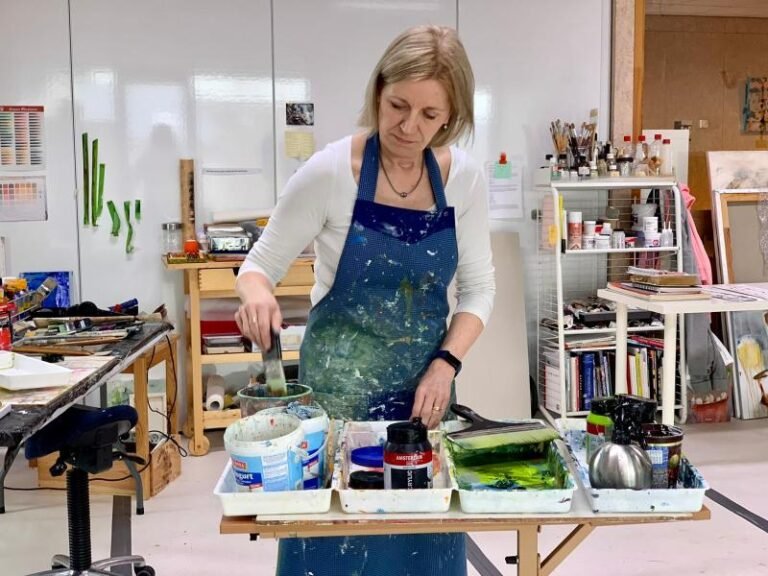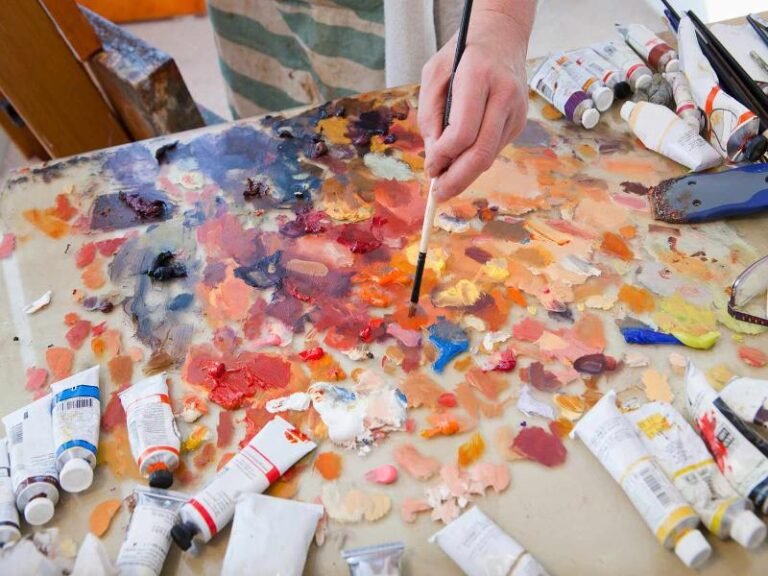12 Oil Painting Mistakes (Beginners Must Avoid)
Embarking on the journey of oil painting is an exciting challenge for beginners. In this guide, we will discuss the most common oil painting mistakes to make the artistic journey more rewarding.
Let’s break down each oil painting mistake in detail, explained from a beginner’s perspective:
1. Skipping the Surface Preparation
Before diving into your painting, it’s crucial to prepare your canvas or support properly. Skipping this step can lead to poor paint adhesion and affect the longevity of your artwork. Priming your canvas creates a suitable surface for the paint to adhere to and ensures that it doesn’t get absorbed unevenly.
2. Using Poor-Quality Materials
Using cheap paints, brushes, and canvases might seem like a cost-effective choice, but it can impact the overall quality of your painting. Low-quality materials can result in colors that don’t blend well, brushes that shed bristles, and canvases that deteriorate over time. Investing in good-quality materials will enhance your painting experience and the final result.
3. Neglecting to Plan the Composition
Starting a painting without a clear plan is like embarking on a journey without a map. Take time to sketch and plan your composition before applying paint. Consider the placement of objects, balance, and focal points. Planning helps you avoid confusing or unbalanced artwork.
4. Not Allowing Layers to Dry
Oil paint requires time to dry between layers. If you paint on a wet layer, you risk creating muddy colors and losing definition. Patience is key in oil painting. Allow each layer to dry before adding another to maintain the integrity and clarity of your colors.
5. Overusing Solvents
Solvents are used to thin paint, but excessive use can lead to problems. Over-thinning can result in weak colors, loss of vibrancy, and a compromised paint film. Use solvents sparingly, and consider other mediums for thinning, such as linseed oil or medium.
6. Ignoring Color Mixing Principles
Without understanding color theory and mixing, you might end up with muddy or dull colors. Learn the basics of color mixing, such as complementary colors and color temperatures, to achieve the desired hues and tones in your paintings.
How To Mix Colors For Oil Painting
7. Ignoring Values
Values refer to the range of light and dark tones in your painting. Ignoring values can lead to a lack of contrast and depth. Pay attention to the play of light and shadow to create a more dynamic and visually engaging composition.
8. Overworking the Painting
It’s tempting to keep refining and reworking areas, but overworking can result in a loss of spontaneity and freshness. Know when to stop and consider your painting finished. Sometimes, imperfections add character to the artwork.
9. Using Too Much Paint
Applying thick layers of paint without considering drying time can lead to cracking as the painting ages. Use a moderate amount of paint and build up layers gradually. This approach ensures that each layer dries properly and contributes to the overall stability of your artwork.
10. Not Cleaning Brushes Properly
Failing to clean brushes thoroughly can result in color contamination. It’s essential to clean your brushes between color changes to maintain color purity. Neglecting this step may unintentionally mix colors on your palette and canvas, affecting the intended color scheme.
11. Painting Without a Focal Point
A focal point guides the viewer’s attention and gives your painting a sense of purpose. Without one, your artwork may appear chaotic or lack direction. Plan for a central point of interest, whether it’s a subject, an area of high contrast, or a significant element in your composition.
12. Ignoring Edges
Neglecting to pay attention to the edges of objects can result in a lack of definition and form. Vary your brushwork and pay attention to the softness or sharpness of the edges. This detail adds realism and dimension to your paintings.
Understanding and addressing these oil painting mistakes will help you grow as an artist and improve the overall quality of your oil paintings.
Happy painting!
Key Takeaways (Oil Painting Mistakes)
- Surface Preparation: Properly prime the canvas for better paint adhesion.
- Quality Materials: Invest in good-quality paints, brushes, and canvases for improved results.
- Composition Planning: Sketch and plan the composition before starting to avoid confusion.
- Layer Drying Time: Allow each layer to dry before adding another to prevent muddy colors.
- Solvent Moderation: Use solvents sparingly to avoid weak colors and a compromised paint film.
- Color Mixing Knowledge: Understand color theory to avoid muddy or dull colors in your palette.
- Value Attention: Pay attention to values for a dynamic and well-contrasted painting.
- Avoid Overworking: Know when to stop and avoid overworking to maintain freshness.
- Moderate Paint Usage: Apply a moderate amount of paint to prevent cracking as it dries.
- Brush Cleaning: Thoroughly clean brushes between color changes to maintain color purity.
- Establish a Focal Point: Plan for a central point of interest to guide the viewer’s attention.
- Edge Awareness: Vary brushwork and pay attention to edges for realism and dimension.





